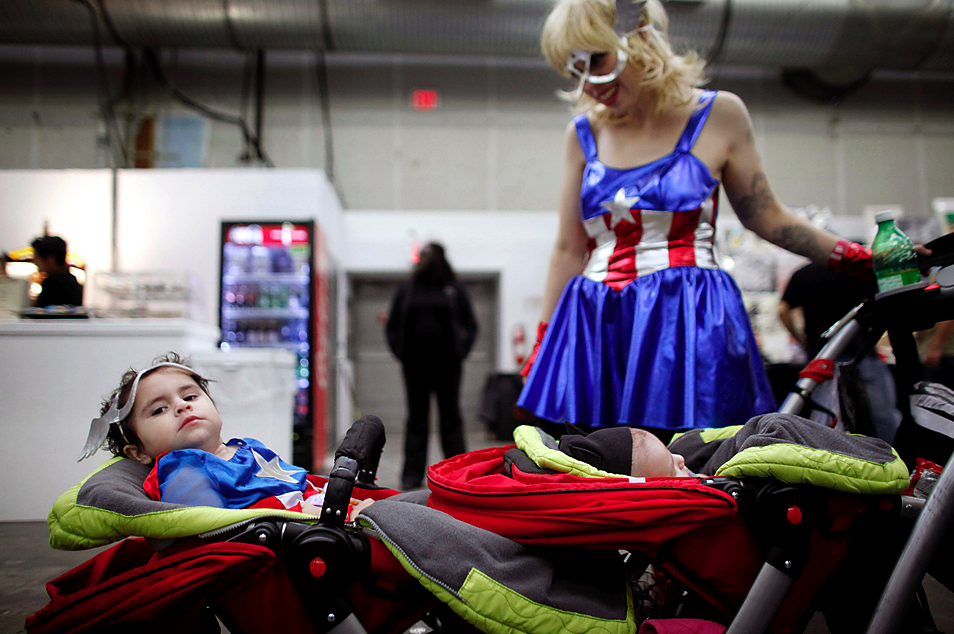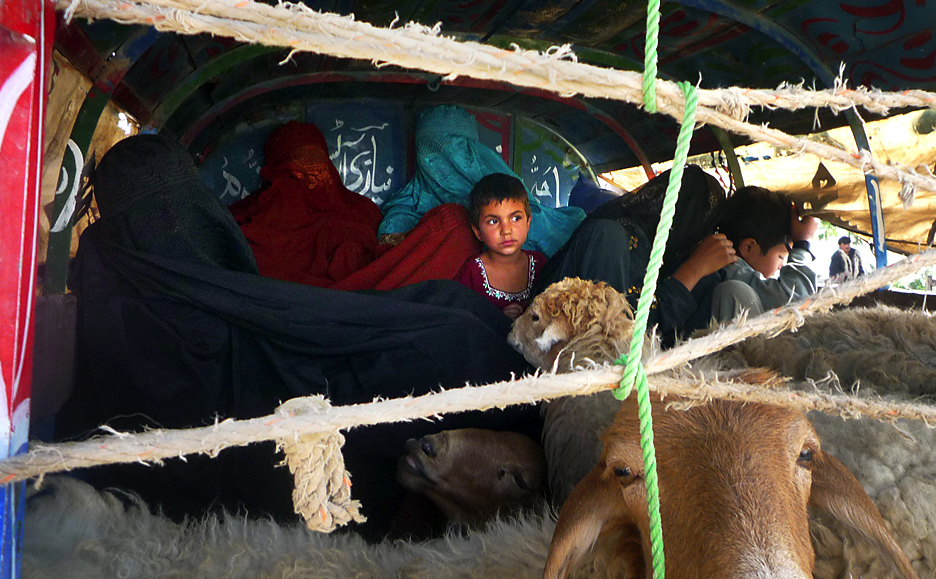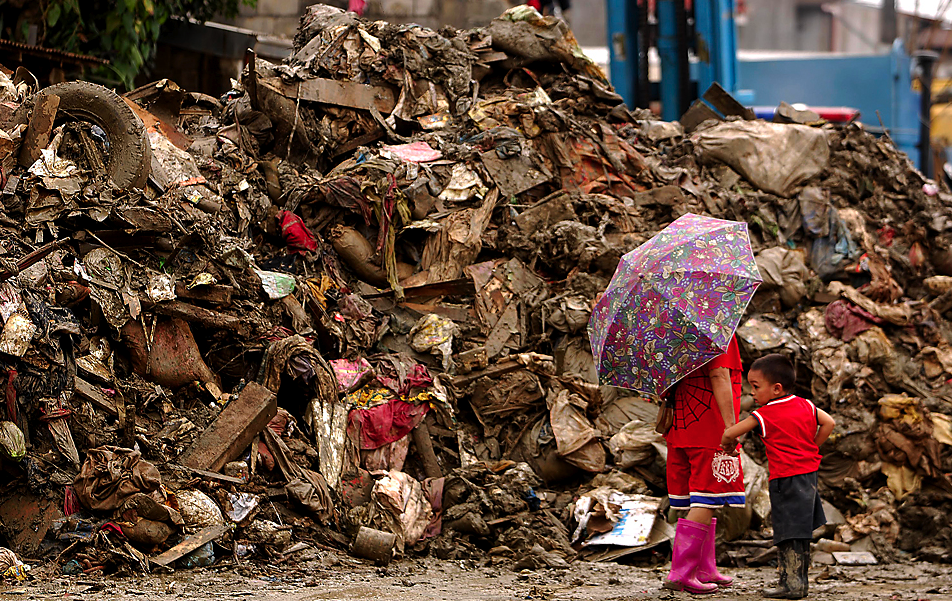Kids have been in the news a good bit lately. A few months back you may recall the big flap when President Obama delivered a speech before school aged children and was accused of attempting to indoctrinate them with his “socialist ideology”: stay in school and work hard. Children, it seems, are especially susceptible to the siren song of presidential eloquence and need to be protected. Since then I’ve taken notice of the fact that children—much like animals—appear to show up more or less randomly in lots of the “pictures of the day” slide shows one finds on the websites of most national newspapers. What I mean by “randomly” is that such images oftentimes seem to have no direct connection to stories or events otherwise being reported. And yet it happens so regularly that it seems reasonable to assume that something is being communicated. But what? Consider three images that showed up this past week at the Wall Street Journal.

Here we have a mother and her son dressed up in super hero costumes for the “Big Apple Comic-Con.” If you don’t know what that is, well, neither do I, and there is nothing in the WSJ that gives us a clue. And it is probably besides the point anyway. But what is the point? The picture seems to lack any real drama. The costumes seem altogether out of place—notice that no one around them seems to be in costume—and thus direct attention to the one thing that stands out: facial expressions. The mother, whose face is partially veiled by glasses and hair, smiles possessively at her child who in turn stares at the camera with what can only be described as a measure of both skepticism and resignation.
A second picture offers a point of comparison.
The photograph is of a “tribal family” fleeing a military attack against militants in South Waziristan, as they approach a checkpoint near Dera Ismail Khan, Pakistan. There is a bit more context here as the military assault against the Taliban leading to over 100,000 refugees was actually covered in the paper, but the affective meaning of the image itself is hard to read. All of the adults are women and their faces are veiled according to the local custom. What draws our attention once again is the face of a child, and once again the child bears the countenance of skepticism and resignation. The difference here, of course, is that the child is not looking directly at the camera—more in the manner of an offer than a demand—even as his countenance seems channeled by the goat in the lower right of the frame who does appear to be looking directly at the viewer.
A third photograph of a mother and her child walking past a pile of debris left by a series of storms in the Philippines provides an additional point of comparison.
Here, the scene is overwhelmed by what appears to be a mountain of rubble. Once again the face of the adult is veiled as our attention is directed to the face of child which channels the affect of the image. Once again that affect is difficult to read. It doesn’t quite seem to repeat the resignation of the first two images, but there does seem to be evoke a sense of discernment as something in the pile has captured his attention, even if he is not so concerned about it that he seems likely to disconnect from his mother and seek it out
I’m not entirely sure what to make out of this collection of photographs, but even though they are separated from one another in the slide show by other unrelated images, it is hard not to see some point of consonance. There is a degree to which the photographs animate a “Family of Man” sensibility as they direct us to something like the fundamental humanity of children from all around the world—New York, Pakistan, and the Philippines. But there seems to be something more going on here as well, as the affective force of each image emanates from the face and facial expression of a child that belies the presumption of their childlike innocence and intellectual naiveté in a way that suggests that children may be a bit more savvy than some think.
“Out of the mouths of babes” is an old proverb that reminds us that children are capable of knowing far more than we can imagine they know. Perhaps here we have something like the visual complement to that old saying that invites us to see the acumen that even the youngest of children can bring to the world.
Photo Credits: Natalie Behring/Reuters; Ishtiaq Mahsud/AP; Noel Celis/Agence France-Presse/Getty Images


I think anytime that you capture children during a dramatic event or tragedy is a very pure moment because their faces don’t lie. In this particular photo, the child’s face has a sort of disbelief and awe. You cannot see the mother’s expression because it is blocked by the umbrella in her hand but you get the sense of strength, perhaps because she is without a husband and in the picture a single mother. She has to be strong amidst this hardship for the sake of her son. The amount of rubble is immense but the mother and son have triumphed because they have survived. To me it almost feels like they are walking by to pay tribute or maybe observe all the destruction but they do have a safe place to go, the clue is they’re both wearing clean clothes.